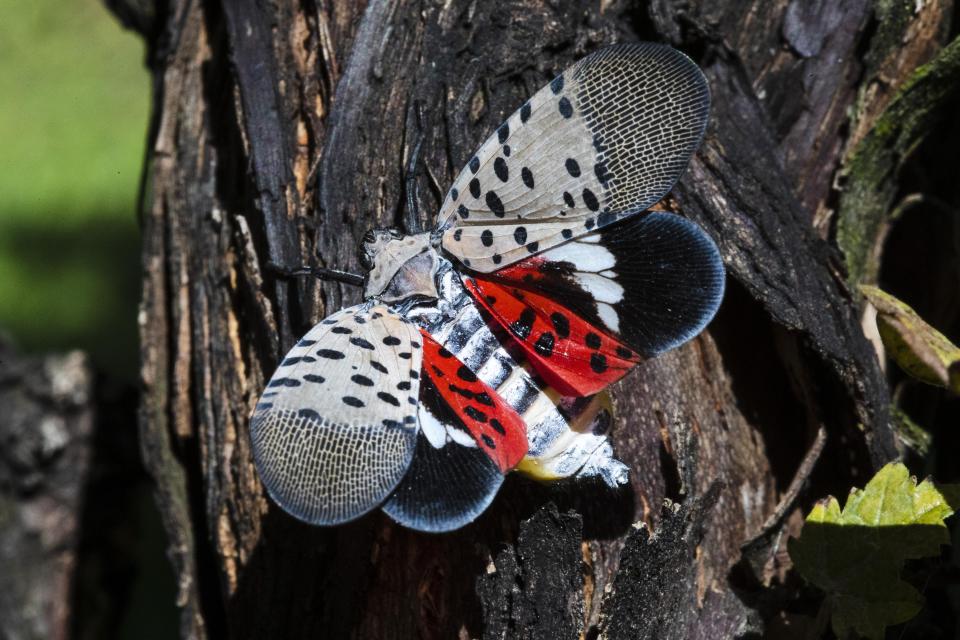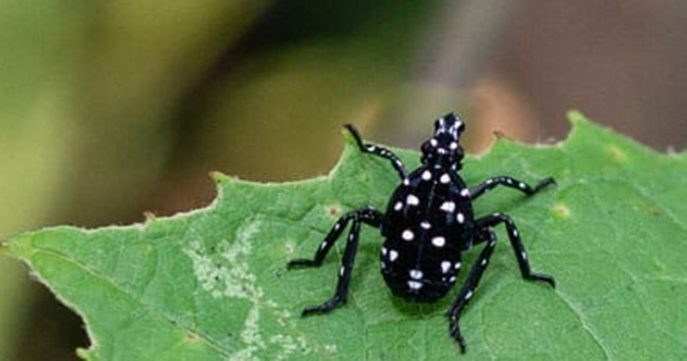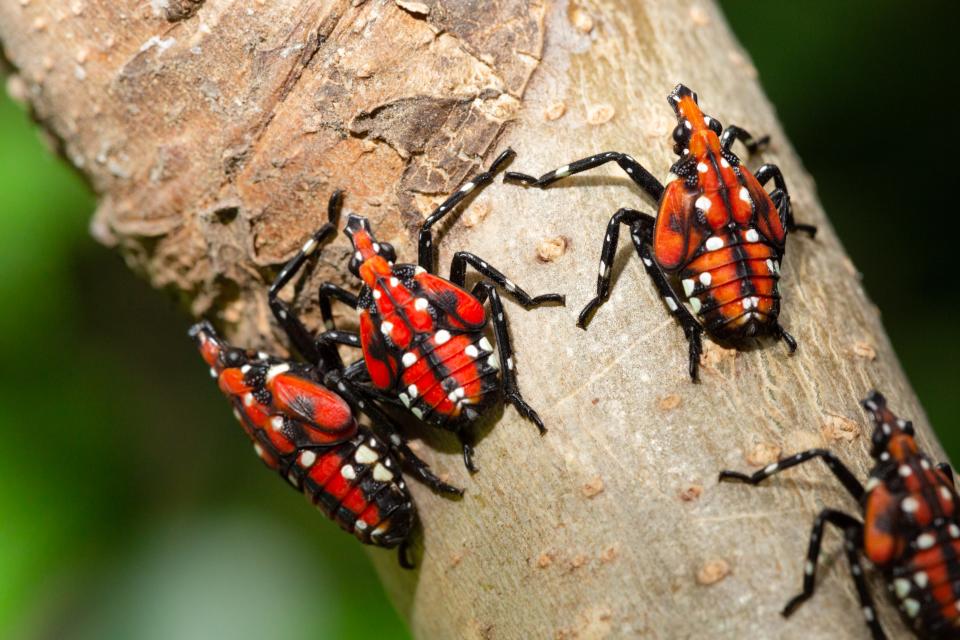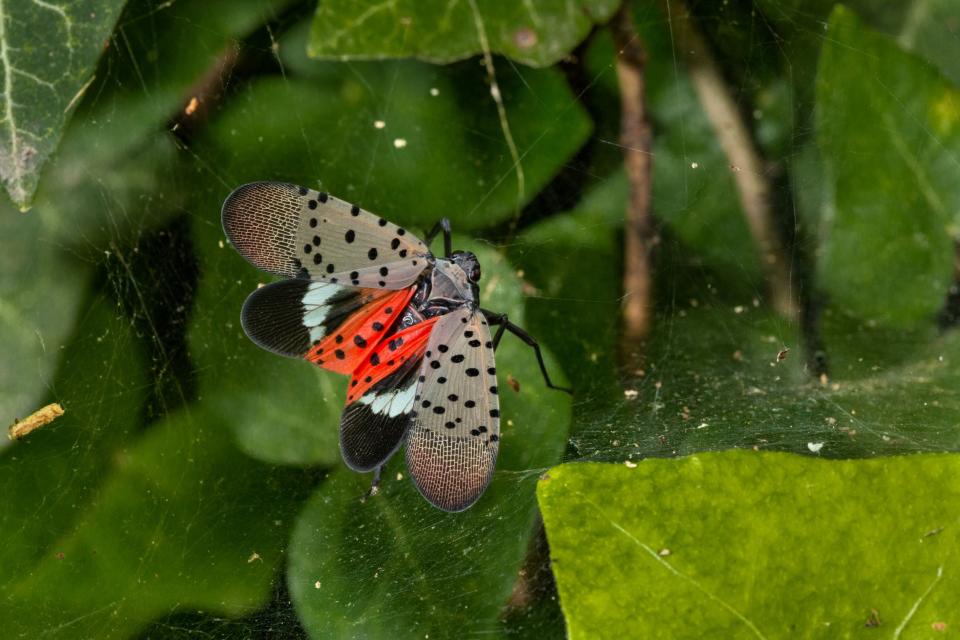They're back: Spotted lanternflies are hatching again. Here's what you need to know.
Get the shoe handy. Break out the fly swatter. It's killing season in parts of the United States plagued by the beautiful – and dreaded – spotted lanternfly.
The next generation of the plant hopper and crop-destroying pest has hatched in 11 states across the northeastern U.S. after their dormant winter.
The invasive bugs, which evolve into colorful moth-like insects, can ravage plants and trees – and could eventually threaten the U.S. wine industry.
The spotted lanternfly, which actually doesn't fly but is a leaf-hopping insect, is thought to have been transported into the U.S. on a stone shipment from China in 2012, according to the New York State Integrated Pest Management Program at Cornell University in Ithaca, New York. The first spotted lanternfly infestation in the U.S. was found in Berks County, Pennsylvania, northwest of Philadelphia, the Cornell experts say.
E.T. phoning home? Giant 'Sky Eye' telescope may have picked up alien signals, Chinese researchers say
Black hole on the move: 'Needle-in-a-haystack' search finds possible phantom-like black hole roaming the Milky Way
Video: Vegas resort releases 100,000 hungry ladybugs to attack pests
Since then, the spotted lanternfly – its scientific name is Lycorma delicatula – has been found in at least 10 more states, according to the Department of Agriculture: Connecticut, Delaware, Indiana, Maryland, Massachusetts, New Jersey, New York, Ohio, Virginia, and West Virginia.
More states are watching for the insect's appearance, too, said Brian Eshenaur, senior extension associate at Cornell's pest management program.
"Due to the impact this insect can have on grape plants and vineyards, the wine- and grape-growing regions on the West Coast are very concerned," he told USA TODAY. "The states in that area of the country are watching closely for any detection of spotted lanternfly. European nations are also concerned about spread to their countries."

Wine crops 'at risk' from spotted lanternfly
There's reason to worry about the arrival of the spotted lanternfly in wine production-rich California. A study published earlier this month in the journal Communications Biology predicts that the spotted lanternfly could reach grape-producing counties in California as early as 2027, but likely by 2033.
It's not just grapes at risk, according to the study completed by researchers at North Carolina State University and the U.S. Department of Agriculture. Other crops "considered at risk from SLF infection" include almonds, apples, walnuts, cherries, hops, peaches, plums, and apricots, they said.
The researchers suggest that vineyards could reduce the spotted lanternfly risks by removing an invasive weed called the tree of heaven, to which the insects are attracted.
In Pennsylvania, a 2019 economic impact study estimated the spotted lanternfly, if uncontrolled, could cost the state at least $324 million annually and more than 2,800 jobs – across the state's produce, wine, timber and plant nursery industries. The study's worst-case scenario puts the losses as high as $554 million annually, and about 5,000 jobs.
Two-thirds of Pennsylvania's counties are in a quarantine zone, meaning many businesses must get a special permit, earned after employees are trained to spot the insects and not to transport them elsewhere. Parts of Maryland, New Jersey, and Virginia are among other states with quarantine areas requiring permits too.
Pest will continue to spread across US
Quarantines and public outreach campaigns have helped slow the spread of the spotted lanternfly but "eradication does not seem possible at this point," Eshenaur said.
Despite New Jersey's quarantines and the state's "Stomp It Out" campaign to get New Jerseyans to crush the bug with their feet, experts say the spotted lanternfly will continue to flourish there in 2022.
"With few predators and no parasites in New Jersey to keep them in check, each year’s population will be bigger than the last," said Matthew Aardema, an entomologist at Montclair State University in Montclair, New Jersey. He has already seen large quantities this spring near his Mercer County home in central New Jersey.

Spotting the spotted lanternfly
The life cycle of the spotted lanternfly begins in mid-spring when they hatch from egg clusters that were laid by the prior generation last fall. They are currently in the early nymph stage, in which they appear black and very small. Two giveaways are their white spots and ability to jump a foot or more.

"You’ll see them marching up stems of plants and emerging everywhere, but they’re between a tick and housefly in size, so they’re easy to miss," said Shannon Powers, press secretary for the Pennsylvania Department of Agriculture.
A warmer spring led to spotted lanternflies hatching about two weeks ahead of last year, she said. So far, the state has had 3,036 reports of lanternflies this season, up from 2,400 about this time in 2021, Powers said. That doesn't necessarily mean there are more insects, but more people may be reporting them, she said.

Between the first and third phases of growth, the spotted lanternfly grows from about ⅛ inch to ¼ inch. Typically in July, the insects hit a fourth phase or instar of growth in which they gain the red, black and white color and are about ½ inch in size, according to the New Jersey Department of Agriculture.

Subsequently, the winged adult insect emerges, typically one inch or larger in size. The adult female insect lays eggs in the fall; the adults don't survive the winter, but the egg masses do. These egg masses, typically about an inch long with a gray mud-like covering, can contain up to 50 eggs. They are typically found on trees, rocks and anything left outdoors such as boats, lawn furniture, RVs and firewood.
What's everyone talking about? Sign up for our trending newsletter to get the latest news of the day
At all stages of life, the insects suck the sap from as many as 70 plant species, especially fruit trees. As they feed, they secrete a sugary substance that draws other insects such as wasps and ants to feed and promotes mold growth. It leads to a one-two punch that can weaken the tree and eventually contribute to its death.
Report and then kill them
Most states have set up websites – such as badbug.nj.gov in New Jersey – for the public to report sightings and get information. Just search your state name and "spotted lanternfly" to find them. Last summer, in August alone the New Jersey Department of Agriculture received almost 10,000 emails and phone calls concerning the pest.
Experts recommend you kill the insects when you see them. There are various ways to kill them including building a trap, as shown by Pennsylvania state officials in an online video. For information on approved insecticides and how to scrape egg masses go to the New York State Integrated Pest Management Program site.
But before you kill the bugs, officials urge you to report them, especially if you live in an area where the spotted lanternfly is not established. "We're encouraging people to send photos first and then, of course, we would love to have them bring in a live sample," said Kirsten Ann Conrad, an agriculture natural resource extension agent with the Virginia Cooperative Extension in Arlington, Virginia. She recommends contacting your local extension office to report sightings.
For now, the area around the nation's capital hasn't had reports of the insects. But northern Virginia counties and parts of surrounding Maryland have had reports. "It is coming at us," she said.
This article originally appeared on USA TODAY NETWORK: Spotted lanternfly is infesting the US again: Here's what to do


